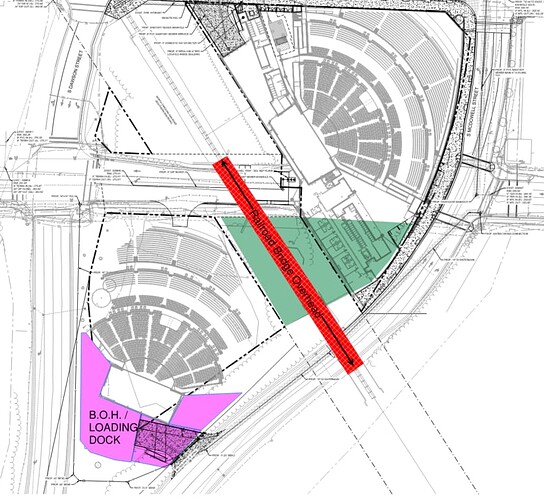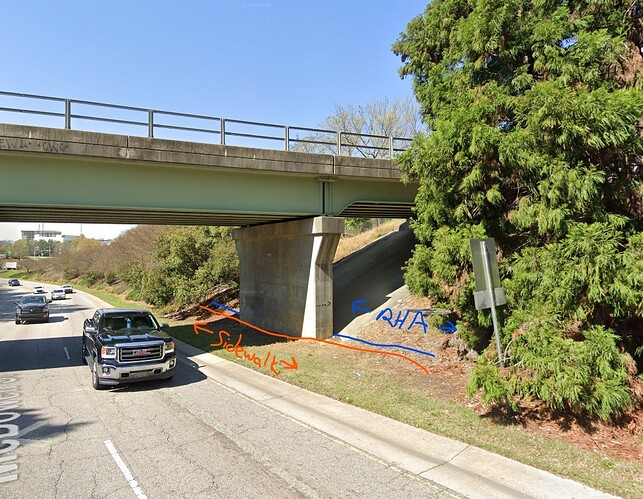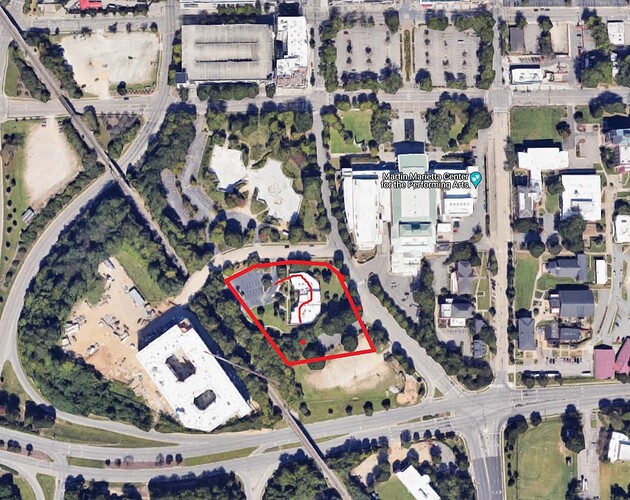It doesn’t bother me personally, but a lot of influential people think closing the street is a bad idea.
How about to keep Boylan heights happy they add a left turn option coming off Boylan onto Western? From there it’s a straight shot to Dawson or McDowell, no lights. I don’t understand why everyone is so attached to South St. Western should already be the preferred route to downtown, at 6 lanes, it’s way overbuilt.
South Street was frequently blocked over the past few years for Maeve construction. It did not significantly impact traffic or convenience. I would simply use Lenoir. I don’t remember anyone complaining about South Street closures then
Oh shit, I’d really love to know what a few “influential” people “think” rather than what actually is. This is, theoretically, a democracy. I’d like to hope our elected officials would be less influenced by a few “influential people” and more influenced by the will of the city’s residents and good of the city and its businesses.
Ok I see it all now that I’ve reread everything. ![]() Honestly, the “South Street Slip” is the way to go. Props to @Francisco for this pic.
Honestly, the “South Street Slip” is the way to go. Props to @Francisco for this pic.
I should have also shared this link earlier, but it slipped my mind. There is more information and some collected traffic data within, as well as renderings presented.
https://www.redhatamphitheater.com/amphitheater-to-move-one-block-south
This would make a ton of sense! Also allow easier access into and out of Dix as a bonus. I think that paired with the proposed slip lane to McDowell would pretty much cover all their concerns.
Oh, I’m not talking about thru traffic. I’m talking about backups that occur when an event lets out at Convention Center, Red Hat, or Performing Arts center, etc. South, Lenoir and even Cabarrus get backed up with cars trying to get to Dawson to leave downtown. When I say “widening” I mean taking out parking spots to allow for longer turning lanes–or like I mention for Lenoir—dual turning lanes.
They will hate this even more because it will mean more through traffic on Boylan.
I understand that issue better as you described, and thank you for the clarification, but I still can’t say that I support any additional lanes to accommodate spike traffic that is tied to an event. It’s not like that spike traffic is long lasting or persistent.
I also agree about turning left out of Boylan onto Western. Then again, I can imagine Boylan Heights residents complaining about Boylan becoming more crowded with folks using the corridor to bypass traversing through DT on Dawson when heading to S. Saunders and the points to the south.
Lastly, why oh why should all decisions regarding our city be subject to approval by folks in single family homes near the city center?
I would like to clarify that, despite every single one of their articles’ headlines being in ALL-CAPS, I have never, and will never have anything to do with “LiVaBLe RaLeiGh” - I promise.
They posted this hit piece complaining about lack of public input, literally the day after the public info session on the project.
Guys, although it would involve a redesign, I think it is sufficiently clear that this whole kit and kaboodle absolutely can fit in the block south of South Street, with plenty of space for back-of-house, and similar (possibly more?) capacity, without closing any streets.
This does require acquiring some excess right-of-way from NCDOT, but so does the slip lane plan. If we can assume their cooperation there, why not here as well?
Benefits?
- Don’t close any streets → better circulation for people and cars, especially on event days
- Better topography (stage at 260’ instead of 290’, back of seating at 290’ instead of 305’, change increases from +15’ to +30’) → better sightlines for concert attendees, better sound attenuation for neighborhoods, better acoustics for performers
- Puts something extremely useful and valuable to the city, in an otherwise awkward, very difficult to develop city-owned lot
Drawbacks?
- A block farther from RCC (but who the hell cares?)
- A minor hassle and delay to change gears at this point. (But “Oh, we didn’t think of that, and it’s a hassle to reconsider at this stage” doesn’t cut it as an excuse.)
- Elevate the train track with a bridge and gives you 1/2 acre of plaza open space for concessions / festival programming / (addtl lawn seating?).
- Opens up 1.5 acres of highly desirable developable land anchored between convention center, amphitheater, and high-rise residenital.
- Could make the structure an iconic entry into downtown. (The current design will be shielded by the elevated railroad)
Great comments; as @dbearhugnc pointed out earlier it is likely the South Street railroad bridge will have to be replaced in the not-so-distant future, as well as adding a second track; but including a new railroad bridge in the scope of the amphitheater relocation would probably blow the schedule out by quite a bit.
The way I see it, if the existing dirt railroad embankment can’t be removed, it could instead be thought of as an asset, helping with sound attenuation for areas to the north and east of the amphitheater.
The plaza idea could nevertheless still be compatible with the existing embankment and bridge, as there is a passageway about 30’ wide between the bridge pier (support) and the abutment (where the bridge ends and the railroad transitions onto the embankment) that could be dug out and turned into a passageway.
And that is also a fantastic point that a well-designed amphitheater could make a great “gateway” to downtown and feature prominently in skyline photos.
I like my block more since it’s bigger and erases any argument about capacity or RoOm fOr LoAdInG but I’d take either of our proposals over the South St closure.
The northern half of your proposal is not owned by the city but it is owned by the chamber of commerce. They could probably be convinced to play ball, but they would have to be relocated. Not necessarily a blocker, but another party to negotiate with.
The southern half is owned by the city, and has recently been selected as the site for the relocation of Fire Station 1 and the RFD administration offices, which are currently located on Dawson across from Nash Square. That is a needed project that has been delayed for years, restarting the project again would probably set the effort back by quite a bit.
I sent my emails in support of this project earlier today. If you’re so inclined, please send separate emails per council member as sending to a group is less likely to get their attention. Address to the council member for more attention.
mary-ann.baldwin@raleighnc.gov
jane.harrison@raleighnc.gov
stormie.forte@raleighnc.gov
mary.black@raleighnc.gov
megan.patton@raleighnc.gov
corey.branch@raleighnc.gov
christina.jones@raleighnc.gov
jonathan.melton@raleighnc.gov
While you probably don’t “need” to email Mary-Ann nor Jonathan Melton, I’m sure they’d love to hear from you!
For what it’s worth, I put the talking points into ChatGPT and had it draft an email for me. I added a couple of additional points and sent that off. As I understand it much of the Boylan Heights and Livable Raleigh nay-sayers are just shooting off a pre-canned template.
Make it yours and it’ll resonate more I believe.
These seem like very addressable issues. Could put the fire station and CoC on the empty lots respectively. Easy trade.
From the Crank Arm owner’s plea to keep RHA downtown, here’s a couple of the negative responses so we can we can see what the anti side is saying (I saw @OakCityDylan in the comments):
Adam, thank you for your comments, your passion and I adore your beer.
I just made two LinkedIn posts and do hereby challenge the city. One of my posts linked to a list of top outdoor amphitheaters in the nation…check it out. Shouldn’t we be striving for greatness? The debate seems to be focused on two options and not on greatness. Why can’t we strive to achieve what the City of Durham did with DPAC? Seems like there needs to be more homework. As a tax paying citizen in the downtown area, I want to see a feasibility analysis of South Street vs. Dix Park. What are the financial implications and how do the alternatives compare financially and from an economic impact? If it exists, I stand corrected, please advise. Lastly, no offense intended, why is Dix Park considered to be “out of downtown”…I respectfully disagree, as it is only outside the legal limits of the BID. See my fun challenge to that notion. I will continue to listen to your opinions and thank you again for your commitment to downtown and your very fun brewery.
I don’t understand this plea. Red Hat isn’t even that old a venue in Raleigh. Where was all of the revenue coming form before? If the new Convention Center gets busy, doesn’t that also help hour business? This seems petty.
Where in fact is this “downtown area” vs downtown? IMO, the voices are not the same. When I hear “downtown area” my mind immediately goes to single family homes on the edges and a POV that’s shaped by the expectations of life that usually come with it. For example, single family homeowners are more likely to see the on street parking immediately in front of their homes to “belong” to them. We’ve all seen the videos online that show some Karen going apeshit on someone parking in HER parking space on a public street. I’d also say that they are more likely to come to the table with expectations around issues like traffic that conform to a worldview that is shaped by a hundred years of American suburbanism. I’d also offer that those in the “downtown area” are more likely to raise their voices publicly because they see a threat to the expectations that are built around their worldview.
The revenues were coming from the growing number performing arts patrons before Durham opened DPAC and Raleigh started losing some of that business.
The revenues were coming from state employees before their jobs were either moved out of downtown or out of the city altogether.
The revenues were coming from employees before the pandemic and before hybrid work fundamentally shifted how often we come to the office.




